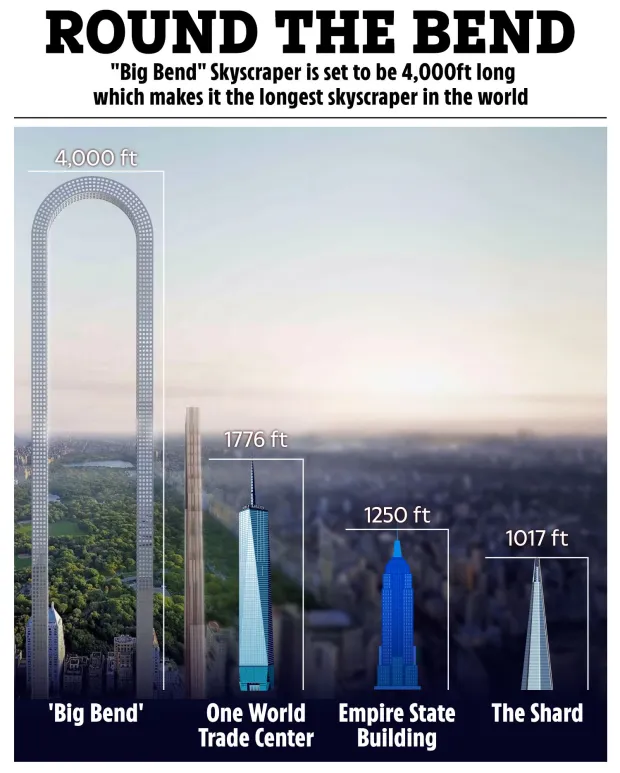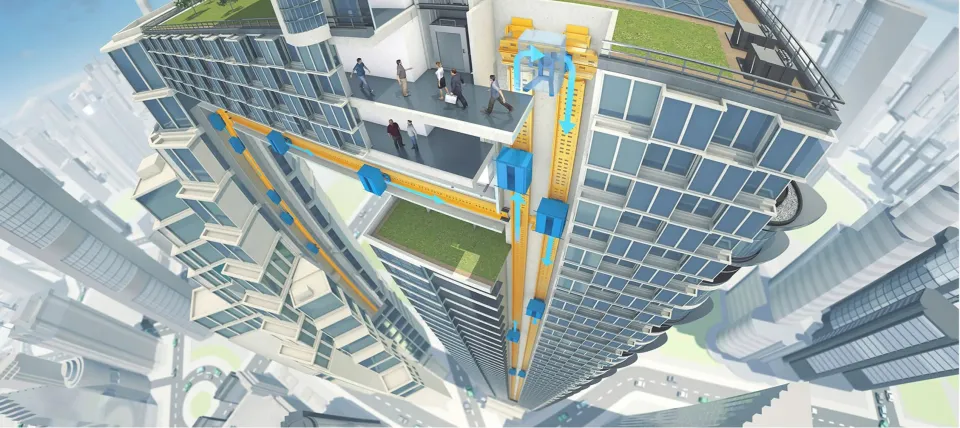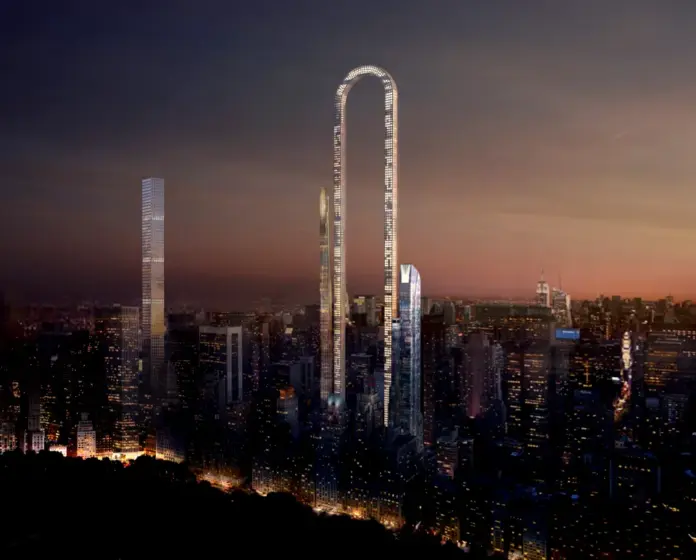New plans for the world’s longest skyscraper, called the “Big Bend,” have been unveiled. The building is designed in an unusual U-shape, aiming to become a groundbreaking solution to New York City’s height restrictions while challenging conventional skyscraper designs. At a staggering 4,000 feet long, the building would stretch into the sky in one continuous, upside-down curve.
A clever design to bypass height limits
The U-shape of the Big Bend is not just for aesthetics but also serves a strategic purpose. The design takes advantage of a zoning loophole that allows developers to buy air rights from neighboring buildings. This curved shape lets the skyscraper occupy more space in the sky without incurring higher costs typically associated with taller buildings. Without this curve, securing approval for such a massive structure would be far more challenging.
A futuristic skyscraper set to outshine the Burj Khalifa

If completed, the Big Bend would surpass the Burj Khalifa in Dubai, the tallest building in the world, by 1,000 feet. The design features a grid of windows on both sides, creating a sleek, modern look. Even the elevators are designed to travel in curves, moving horizontally and in continuous loops. At 200 feet taller than One World Trade Center, the Big Bend would redefine the New York skyline.
The vision behind the Big Bend

Oiio, a US architectural studio, conceived the ambitious design. Architect Ioannis Oikonomou explained that the building aims to stand out not just through its height but by embracing the unique challenge of New York’s zoning laws. By curving the structure instead of bending the rules, the design hopes to achieve architectural prestige while addressing the height limitations in Manhattan.
Controversy and criticism from architects
While the Big Bend concept is bold, it has not been without its critics. Some of New York’s leading architects, such as Steven Holl, argue that such massive skyscrapers symbolize inequality in the city. Locals have also voiced concerns that the building could overshadow Central Park, altering the city’s skyline and quality of life. Architectural Digest even raised alarms about the potential impact on the city’s visual identity, questioning whether such towering structures are appropriate for New York.
The challenge of New York’s zoning laws
Oiio’s design for the Big Bend highlights the ongoing challenges faced by developers working with New York City’s complex zoning laws. These regulations often push builders to maximize building height, creating a system where height is directly linked to prestige and price. With the Big Bend, Oiio aims to use this system creatively, bypassing traditional design limitations to build something truly unique in the heart of Manhattan.


